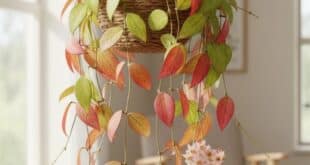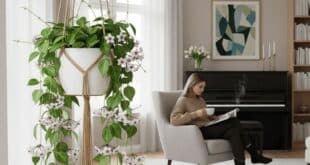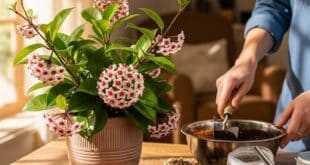Meet The Lipstick Plant
Apostrophe’s Lipstick Plant (Aeschynanthus radicans) is an astonishing houseplant, known for it’s colorful blooms and long vine growth habit. The Lipstick plant its name is given because these flowers look as though they have been placed lipstick tubes… It originates from the tropical rainforests of Southeast Asia. This plant is very popular and loved, for it carries the vibes of the tropics inside your home. Cared properly, the Lipstick Plant will produce stunner flowers and dense shiny leaves that makes it ideal for hanging baskets or shelves.
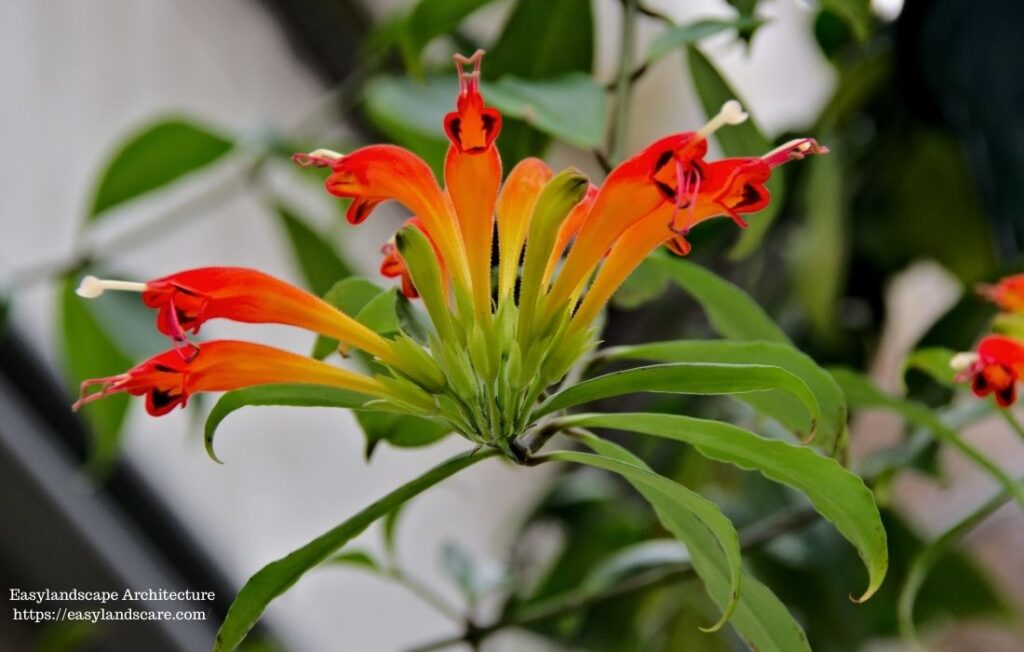
In this article, we’ll explore everything about the Lipstick Plant, from its defining features and origins to care tips and troubleshooting common issues. Whether you’re a seasoned plant enthusiast or a beginner, this guide will help you keep your Lipstick Plant thriving.
What Makes the Lipstick Plant Unique?
Lipstick-Like Blooms and Trailing Vines
All plants have their own specific characteristics. And some are topping with leaves instead of flowers, others stand out due to blossoms. That difference the Lipstick Plant has, from other plants is the flower that looks like a lipstick tube. I find it such a curious and beautiful plant The flowers come in brilliant scarlet red but some cultivars have yellow or orange ones. These shiny, dark green, oval-shaped leaves contrast beautifully with the colored flowers that grow in stems at the tips of vines.
The vines of the Lipstick Plant can grow quite long, making it an excellent choice for hanging baskets. As the vines cascade downward, they showcase the plant’s beauty in all its glory.
Origins of the Lipstick Plant: A Tropical Native
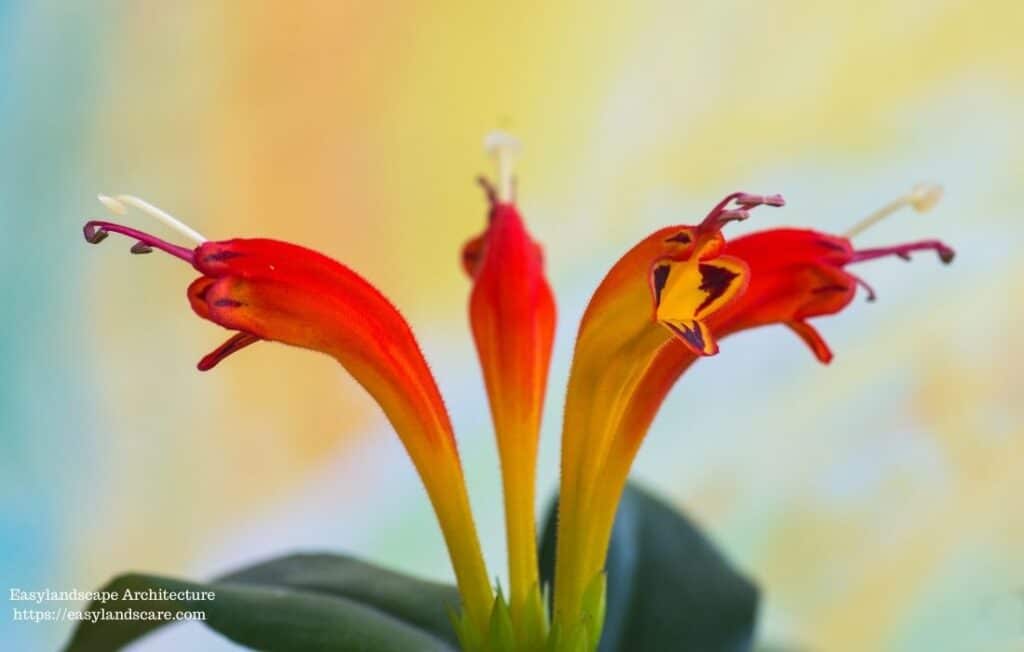
The Lipstick Plant (Aeschynanthus radicans) is native to the tropical rainforests of Southeast Asia, particularly in countries such as Malaysia, Philippines, Thailand and the Indonesia. In its natural habitat, the plant grows as an epiphyte, clinging to trees and thriving in the humid, dappled sunlight of the rainforest canopy.
Understanding its tropical origins is key to replicating its preferred growing conditions indoors. This includes providing adequate humidity, warmth, and indirect light to mimic its natural environment.
Popular Lipstick Plant Species
While Aeschynanthus radicans is the most common type of Lipstick Plant, there are several other species and cultivars worth exploring. Each variety has unique characteristics, from flower colors to leaf patterns.
radicans Lipstick Plant
- It is smaller in size, known for its brighter red flowers and thinner vines.
- Due to its creeping feature, it is generally preferred in hanging baskets.
Mona Lisa Lipstick Plant
- It is a well-known variety of this species. Its large and dark red flowers are among its distinctive features.
- Has a bushier growth habit when young before transitioning to a trailing form.
lobbianus (Basket Vine) Lipstick Plant
- It is known for being smaller in size compared to others in its species. It is famous for its dark green leaves and scarlet-red flowers.
- The buds are darker in color than their counterparts and the flowers have a different harmony.
Aeschynanthus speciosus (King Midas Vine)
- Known for its larger, showy orange and yellow flowers.
- Features longer, more substantial vines.
Aeschynanthus marmoratus
- Grown more for its striking foliage, with dark green leaves patterned with lighter green or yellow marbling.
- Flowers are less prominent but still tubular in shape.
Flower Variations: Colors and Shapes
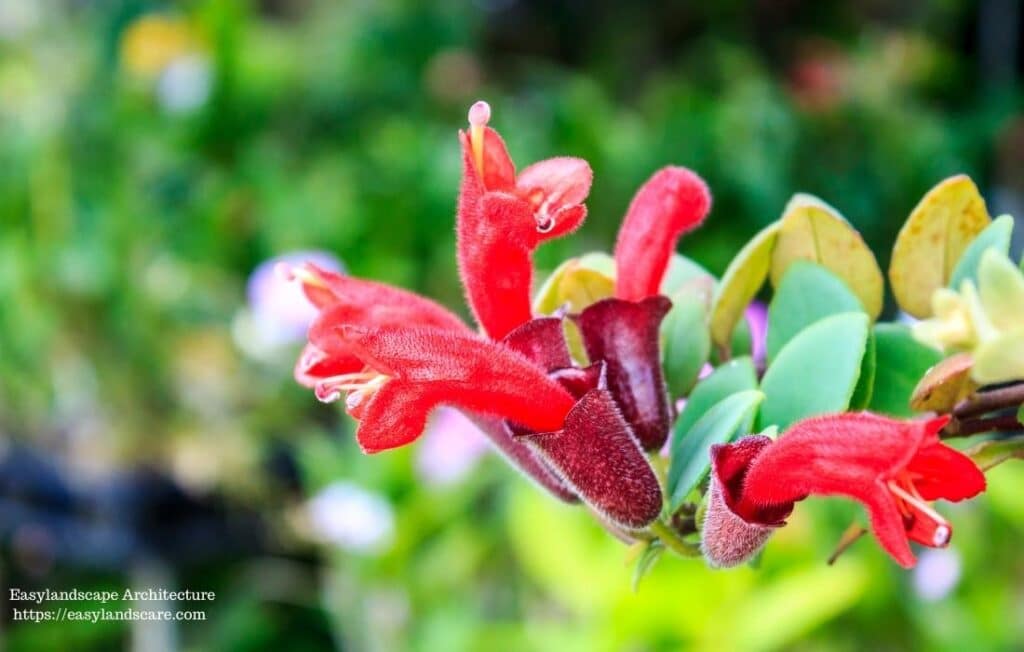
While the classic Lipstick Plant produces scarlet-red flowers, other species and cultivars can showcase blooms in orange, yellow, or pink hues. The flowers retain their tubular, “lipstick-like” shape, though some may have flared openings for added visual interest.
Foliage Variations: Size and Texture
The Lipstick Plant foliage remains fairly even in size and texture (although given the variety of species will have some variation in size/texture) the foliage can be brilliant green or even a little bit shiny. For instance, the leaves of Aeschynanthus marmoratus are patterned in contrast to the broad leafed or thin varieties in other versions.
How to Care for a Lipstick Plant
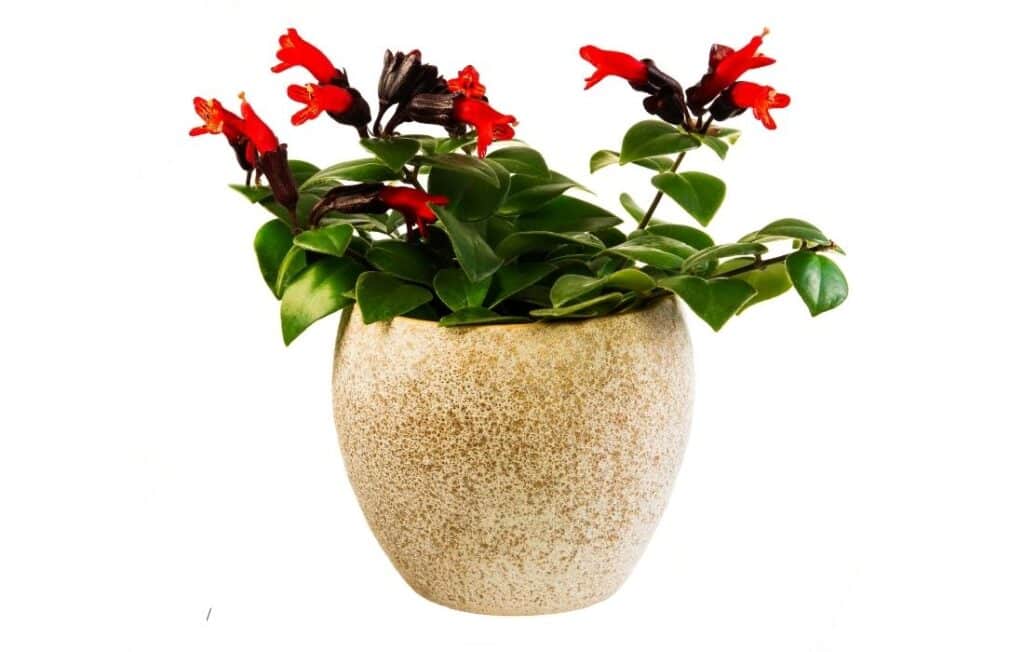
Although Lipstick Plants have particular care requirements, they are a favorite for indoor gardening enthusiasts. Here’s how to support their growth:
Ideal Light Levels
- The best lighting for Lipstick Plants is bright but indirect.
- Keep the plant near an east- or west-facing window for optimal light.
- Protect the leaves by avoiding exposure to intense, direct sunlight.
- When light is insufficient, the plant may produce fewer flowers and become leggy.
Watering Needs
- Throughout spring and summer, water regularly to keep the soil moist, but prevent waterlogging.
- Check the soil’s top inch and water when it becomes dry to touch.
- Reduce watering in fall and winter, allowing the top inch or two of soil to dry out between waterings.
- Ensure the pot has good drainage to prevent root rot.
Temperature and Humidity
- Ideal temperature for Lipstick Plants is between 65 and 80°F (18–27°C).
- High humidity is essential for their growth. To increase moisture indoors, use a humidifier, spray the plant regularly, or place it atop a tray filled with water and pebbles.
- Avoid placing the plant in areas where it may be exposed to chilly air or temps below 60°F (15°C).
Soil and Pot Selection
- Use a soil mix that allows good drainage, ideally formulated for epiphytic species.
- A potting mix with orchid bark, perlite, and peat moss is highly effective.
- Select a pot that has drainage holes to avoid water buildup.
- Lipstick Plants often do well in slightly root-bound conditions, so repotting is only necessary every 2-3 years.
Fertilizing
- Feed the plant every 2-4 weeks during the growing season with a balanced liquid fertilizer diluted to half strength.
- Fertilizing should be minimized or halted during the cooler seasons.
- Avoid using nitrogen-rich fertilizers that favor foliage over flower development.
Encouraging Blooms
To get your Lipstick Plant to produce its signature blooms:
Younger plants may take a year or two to mature enough to start blooming.
Provide Adequate Light
Bright, indirect light is crucial for flower bud formation.
Slight Cooling Period
A slight drop in temperature (around 60-65°F or 15-18°C) in late fall or early winter can encourage blooming.
Consistent Watering
Avoid extreme fluctuations in moisture levels, as this can stress the plant and hinder blooming.
Mature Plant Age
Common Issues with Lipstick Plants
Leaf Drop
- Cause: Problems arise when watering is irregular, temperatures fluctuate suddenly, drafts occur, or humidity is too low.
- Solution: Evaluate and adjust your care routine.
Lack of Blooms
- Cause: Insufficient light.
- Solution: Move the plant to a brighter location with indirect sunlight.
Leggy Growth
- Cause: Low light levels.
- Solution: Make sure the plant gets enough light.
Bud Drop
- Cause: Stress caused by shifts in temperature, dry air, or irregular watering.
- Solution: Avoid moving the plant once buds form and maintain consistent care.
Pests
- Common Pests: Aphids and mealybugs.
- Solution: Inspect regularly and treat infestations with insecticidal soap or neem oil.
Root Rot
- Cause: Overwatering.
- Solution: Make sure the pot drains well and let the soil dry out a bit before watering again.
Is the Lipstick Plant Toxic?
Good news for pet owners! The ASPCA states that Lipstick Plants are safe and non-toxic for cats, dogs, and horses. While safe, it’s still best to discourage pets from chewing on houseplants to avoid mild stomach upset.
Lipstick Plant for Home Decor: Cascading Beauty
The Lipstick Plant’s trailing vines and vibrant blooms make it a stunning addition to indoor spaces.
Perfect for Hanging Baskets
- Showcase the plant’s cascading vines and flowers by placing it in a hanging basket.
- Position the basket in a well-lit location to enhance its appearance.
Adding a Pop of Color to Shelves and Mantels
- Set the plant on shelves or mantels to allow its vines to trail beautifully.
- Pair it with other tropical plants for a lush, exotic display.
Conclusion
The Lipstick Plant (Aeschynanthus radicans) is a delightful houseplant that combines vibrant blooms with lush, trailing vines. With proper care, it can thrive indoors, adding a touch of exotic beauty to your home. By providing bright, indirect light, maintaining consistent watering, and ensuring warm, humid conditions, you can enjoy the stunning floral display of this tropical gem. Whether in a hanging basket or perched on a shelf, the Lipstick Plant is sure to become a centerpiece in your indoor garden. For another exotic plant that can rival the Lipstick plant, you can read our blog about the Goldfish plant 😉


